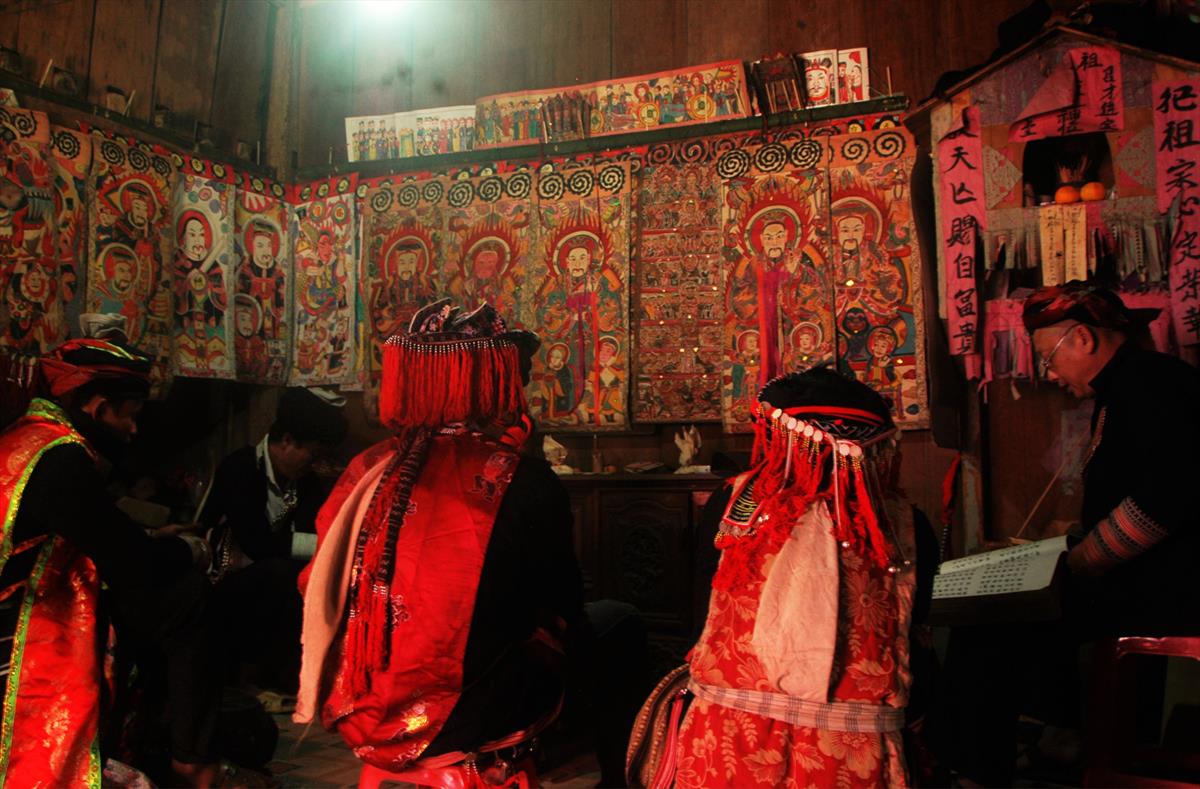Worship paintings of the Giay people

Although classified as folk art, in fact, worship paintings from ancient times were all meticulously made by professional painters. The reason is that when looking at old paintings, people discover that the brushstrokes on them are extremely meticulous and sharp. That is what creates the characteristics of the Giay people's worship paintings. To paint a set of worship paintings, the homeowner will invite the painter to his house. After the painter returns to the homeowner's house, the homeowner will be provided with food and drink until he completes his work. Each set of paintings like this has about ten paintings. When starting to paint, the homeowner will usually perform an introduction ceremony, and when the painting is finished, he will report to his ancestors that the painting is finished. Nowadays, the number of worship painting painters is gradually decreasing. Traditional paintings that were previously passed down from father to son are now gradually disappearing. The reason may be that the ancient painting technique is quite complicated and few people can follow.
The Giay people's worship paintings include 36 paintings, and fortunately, none of them have been lost. The worship paintings are still sacred treasures in the cultural and religious identity of the Giay people. In the worship paintings, there is a main painting of the Six Harmonies Patriarch, an authoritative figure in Taoist beliefs. This is an indispensable painting in ceremonies. The Giay people believe that without him, they would not have enough authority to perform the ritual. In addition to the main painting, in the worship painting system of the Giay people, there is also an anonymous Eight Trigrams dedicated to the offering of bad luck. The painting has a very special form, a folk cultural color from the inside out. The painting uses self-woven muslin cloth, painted with Chinese ink and water-based ink. The painting is 0.20m wide and 4.90m long. The painting will be hung on a pole in the middle of the house during the worship process. There are 32 frames and the drawings on the painting are presented in a storytelling style. The stories of everyday life will be told through easy-to-understand and innocent pictures. The first is the image of the sun, the moon and gods such as the god of thunder, the god of rain, and the god of wind. Next are strange creatures such as the 9-headed phoenix, the 9-tailed dog, and the 8-claw crab. After that are images of the bad things in life, and finally, the scene of chasing demons out to the 5 sea gates. Through the picture, it can be seen that human spirituality is not always governed by beliefs, but through beliefs, people can also express their outlook on life in the face of bad habits...

